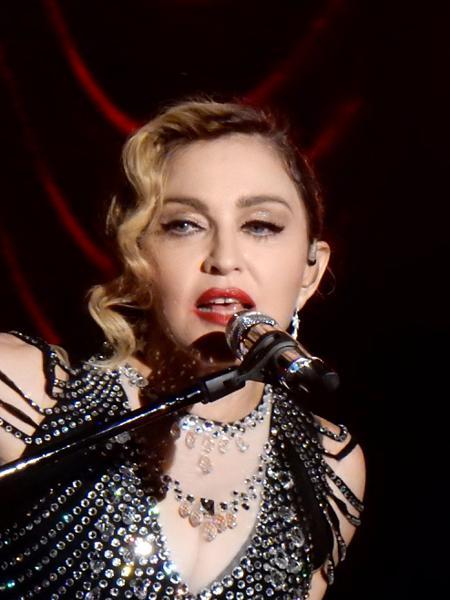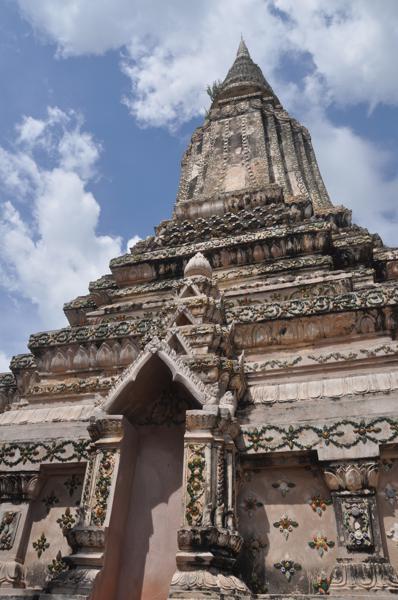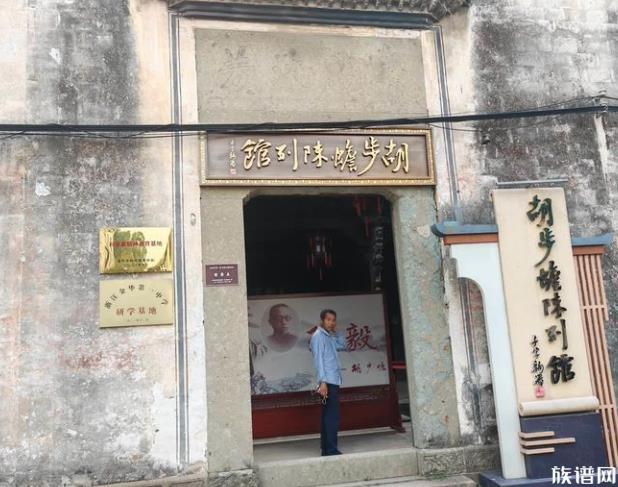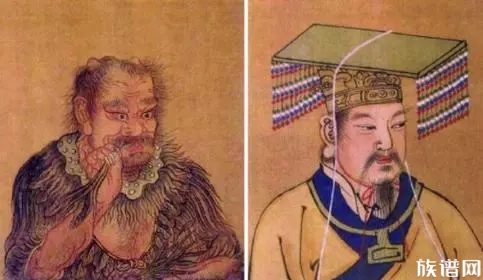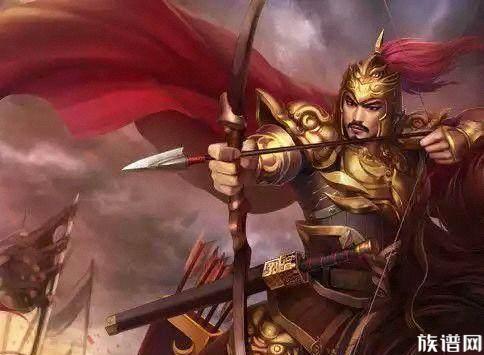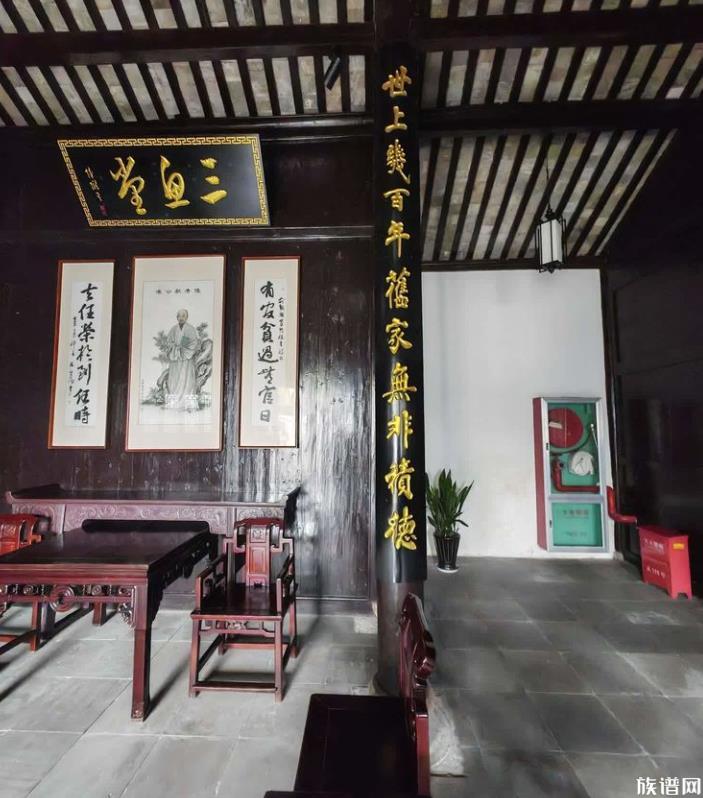



锡耶纳赛马节
历史
起源
中世纪起,锡耶纳在城镇中心的广场进行各种竞赛。如多人拳击(pugna)、马术、斗牛(16世纪起)等多人竞赛。 14世纪起,城市开始有分区参赛的惯例,这类在锡耶纳境内举行的大型竞赛开始有palii alla lunga的名称。比赛之盛大,往往扩及整个城市。
1590年托斯卡尼大公立法禁止斗牛赛,因此各分区改在田野广场举行其他非斗牛的竞赛。一开始是水牛赛(bufalate),后来改为赛驴(asinate), 此时其他地方已开始有赛马活动出现。1633年始开始有我们现在看到的赛马(意大利文称palio alla tonda,有别于早期的palii alla lunga)。
八月赛马节
一开始,每年只在七月二号举行一次赛马。1701年起,第二场赛马节才偶尔在8月16号举行。由于8月16号恰逢圣母升天节,因此第二场赛马节常常被自动归类为圣母升天节的庆典之一。而之所以会订在8月16日是因为8月14和15号已经被广泛认定为圣安东尼日(意大利语:Processione dei Ceri)。
八月赛马节一开始仅作为七月赛马节的延伸。八月赛马节通常由七月胜利的分区出资举行(若该区负担得起)。1802年后,八月赛马节改由整个城市出资举行,不再由分区独力承担,八月赛马节正式成为年年都有的节日。
第一场八月赛马节举办于1581年8月15日。
法令限制
1792年,来自慕尼黑的执政者巴伐利亚的薇奥兰特(英语:Duchess Violante Beatrice of Bavaria)首次替锡耶纳的17个分区订定了正式的划分界线;同时还整并了部分分区,将整个锡耶纳的分区数缩减为17个。鉴于往年竞赛中发生的意外,法令于同年规定最多十个分区参赛。
十七个分区
这十七个分别为:

鹰区

毛毛虫区

蜗牛区

猫头鹰区

龙区

豪猪区

独角兽区

母狼区

贝壳区

鹅区

波浪区

豹区

森林区

龟区

塔区

绵羊谷区,经常简称为 Montone
每一场比赛中, 十七分区中只有十个分区参与:去年未参赛的七个分区,其余三队则为抽签决定。
现今的比赛
第一场比赛于7月2日举行,既是圣母访亲盛宴,也是当地节日普罗旺斯诺麦当娜的日期。第二场比赛是8月16日举行的,是圣母盛宴之后的第二场比赛。在特殊事件(例如,阿波罗11号登陆)和重要纪念日(例如意大利统一百周年)之后,西南社区可能决定在5月至9月期间举行第三次比赛。最近一次是在千禧年(公元2000年)。
比赛仅有十个队伍,所以并非所有分区皆能上场比赛。去年未参赛的七个分区将优先进入比赛名单,再用抽签决定其余三队。(每年有两次,分别于五月底及七月初)。 在预备赛结束一年后,私人业主(其中包括一些骑师)为意大利其他赛马节提供马厩以供挑选并聘请兽医为马匹检查身体状况,于比赛前三天决定十个规模相等的马厩,并以彩票决定哪一批马代表其分区出赛。将会举办六场预备赛用以选择马匹,第一场将于傍晚举行,最后一场则结束于赛马节开始前的早晨。比赛期间经常生贿赂的情形,促使各分区的选手走会密切注意对手的一举一动。仅允许杂种马上场比赛,不能使用纯种马。
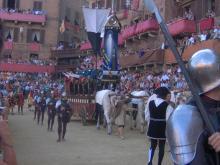
The carroccio(英语:carroccio) of Siena during the Corteo Storico(英语:Corteo Storico) procession preceding the Palio of August 2006
The race is preceded by a spectacular pageant, the Corteo Storico(英语:Corteo Storico), which includes (among many others) Alfieri, flag wavers, in medieval costumes. Just before the pageant, a squad of carabinieri on horseback, wielding swords, demonstrate a mounted charge(英语:charge (warfare)) around the track. They take one lap at a walk, in formation, and a second at a gallop that foreshadows the excitement of the race to come, before exiting down one of the streets that leads out of Piazza del Campo. Spectators arrive early in the morning, eventually filling the centre of the town square, inside the track, to capacity; the local police seal the entrances once the festivities begin in earnest. Seats ranging from simple bleacher(英语:bleacher)s to elaborate box seats(英语:box (theatre)) may be had for a price, but sell out long before the day of the race.
在比赛之前有个壮观的盛会,古装(英语:Corteo Storico),其中包括(在许多其他人中)Alfieri,旗帜挥舞,在中世纪的服装。 就在赛前,卡宾枪骑兵队挥舞著剑,在赛道周围表演冲锋。 他们步行一圈,形成一秒钟,另外一个赛道,预示著比赛的兴奋,然后退出了出自Piazza del Campo的一条街道。 观众清晨到达,最终填补了城市广场的中心,在轨道内,容纳; 一旦庆祝活动开始,当地警方就会密封入口。 从简单的长椅到精心制作的座椅座椅的座位可能有一个价格,但在比赛当天很久才卖出。
七月赛马节的下午七点半及八月赛马节的下午七点,爆炸声响彻整个广场,向成千上万的围观者通报了比赛即将开始。比赛将会绕着田野广场奔跑三圈,the perimeter of which is covered with several inches of dirt andtuff(imported and laid for the occasion at great expense to the city) and the corners of which are protected with padded crash barriers for the occasion. The jockeys ride the horses bareback from the starting line, an area between two ropes. Nine horses, in an order only decided by lot immediately before the race starts, enter the space. The tenth, the rincorsa, waits outside. When the rincorsa finally enters the space between the ropes the starter (mossiere) activates a mechanism that instantly drops the canapo (the front rope). This process (the mossa) can take a very long time, as deals have usually been made between various contrade and jockeys that affect when the rincorsa moves - he may be waiting for a particular other horse to be well- or badly-placed, for example.
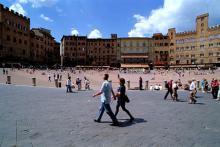
View of the Piazza del Campo, where the Palio is run
在危险的,陡峭的斜坡轨道上,骑士被允许使用他们的鞭子(意大利语, nerbi,拉伸的,干公牛皮)不仅为自己的马,而且为了扰乱其他马和骑士。事实上,是由代表他的对手的马赢得的,而不是骑师。 获胜者是穿过终点线的第一匹马 - 一匹马可以没有骑手赢得胜利(一种被称为cavallo scosso的条件)。 一匹马也可以没有它的装饰头饰(spennacchiera),虽然相反的信念也被广泛地持有,甚至在塞内加尔人之间。 比赛中的失败者被认为是马匹是第二,而不是最后的对手。
一些未翻译的非现代汉语已进行隐藏,欢迎参与翻译。The winner is awarded a banner of painted silk, or palio, which is hand-painted by a different artist for each race. The enthusiasm after the victory, however, is so extreme that the ceremony of attribution of the palio is quite instantaneous, being the first moment of a months-long celebration for the winning ward. There are occasional outbreaks of violence between partisans of rival contrade.There may be some danger to spectators from the sheer number of people in attendance. There have also been complaints about mistreatment of horses, injuries and even deaths, especially from animal-rights associations and even from someveterinarians. In the Palio held on 16 August 2004, the horse for the contrada of Bruco (the Caterpillar) fell and was badly trampled, as the race was not stopped despite possible additional safety risks for other horses. The horse died of its injuries, raising further complaints from animal-rights organizations.The Palio differs from "normal" horse races in that part of the game is for the wards to prevent rival contrade from winning. When a contrada fails to win, its historical enemy will celebrate that fact nearly as merrily as a victory of its own, regardless of whether adversarial interference was a deciding factor. Few things are forbidden to the jockeys during the race; for instance, they can pull or shove their fellows, hit the horses and each other, or try to hamper other horses at the start.The most successful ward is Oca, the Goose, which has won 63 races (at least according to their records, which start from 1644), followed by Chiocciola, the Snail, with 51, and Tartuca, the Tortoise, with 46. Oca is also the contrada with the most wins in recent history (from 1900 to 2010) with 21 victories, followed by Selva, the Forest, with 18, and Drago, the Dragon, with 17.Among jockeys, the most victorious of all time is Andrea Degortes(英语:Andrea Degortes), nicknamed Aceto ("Vinegar"), with 14 wins (from 1964 to 1996). Angelo Meloni, nicknamed Picino (active from 1897 to 1933) has the second in the number of wins with 13 successes, and Luigi Bruschelli, nicknamed Trecciolino(英语:Luigi Bruschelli) (still active), has the third most of 12 wins (although he claims 13 victories, his horse won without him one year).The most successful horses were Folco and Panezio with eight wins each, followed by Topolone with seven.In recent history (from 1900 to the present), only three wards have ever succeeded in winning both the July and the August races in a single year (the term in Italian is fare cappotto). Tartuca (the Tortoise) accomplished the feat in 1933, while Giraffa (the Giraffe) won both races in 1997, with jockey Giuseppe Pes, nicknamed Il Pesse. In 2016, jockey Jonatan Bartoletti, on the mount "Preziosa Penelope", won both the July and August races for Lupa (the She-wolf).Ritual and rivalryThe Palio di Siena is more than a simple horse race. It is the culmination of ongoing rivalry and competition between the contrade. The lead-up and the day of the race are invested with passion and pride. Formal and informal rituals take place as the day proceeds, with each contrada navigating a strategy of horsemanship, alliances and animosities. There are the final clandestine meetings among the heads of the contrade and then between them and the jockeys. There is the two-hour pageant of the Corteo Storico, and then all this is crowned by the race, which takes only about 75 seconds to complete. Although there is great public spectacle, the passions displayed are still very real.The contrada that has been the longest without a victory is nicknamed nonna ("grandmother"). Civetta (the Owlet) had the title from 1979 until 2009, when it won 16 August race. Torre (the Tower) had this title for being without victory for 44 years (from 1961 to 2005), and Bruco (the Caterpillar) held the title for not winning over 41 years (from 1955 to 1996). Last nonna was Lupa (the She-Wolf), which has not had a victory since 2 July 1989, a period of 27–28 years, until July 2016, when it finally won, leaving now the nonna title to Aquila (the Eagle).Palio (Drappellone) The drappellone banner of the Palio of 16 August 2009, painted by Giuliano GhelliThe drappellone ("banner"), or palio, known affectionately as "the rag" in Siena, is the trophy that is to be delivered to the contrada that wins the Palio.The palio is an elongated rectangular piece of silk, hand-painted by an artist for the occasion. It is held vertically on a black-and-white shaft halberd and topped by a silver plate, with two white and black plumes draped down the sides.The palio, along with the plumes, remains the property of the contrada. The plate is returned to the city of Siena before the two Palii of the following year, after the date and the name of the victorious contrada are inscribed on its back. There is one silver platter for the Palio in July and another for the August Palio. The plates are replaced approximately every ten years.The value of the banner is unique, because it represents a particular historical period of the city of Siena. The palii often reflect the symbols of the various governments that have presided at various times, including the crest of the grand duchy of Lorraine, the crest of theGrand Dukes of Tuscany, the crest of theKingdom of Savoyof Italy, symbols fromFascist Italy, and most recently, imagery of theRepublic.The process that an artist should follow in designing the palio is rigid: it must follow a precise iconography that includes some sacred symbols, as the July Palio is dedicated to the Madonna of Provenzano, and that of August to the Madonna of the Assumption. It must present the insignia of the city, those of the third part of the city, and the symbols or colors of the ten contrade participating in the race. There are, however, no limits regarding the style of the art. The palio is first presented at a press conference in the courtyard of the Podestà of the City Hall about a week before the race.The Palio runs throughout the year A typical image of the four-day party: groups of Contrada dellaTorre (Tower)on stage singingAlthough many activities take place within each contrada, the organization of the Palio is still the largest, since it is not just in two races each year. Each time, the festival itself runs for four days of events, the preparation for which lasts all year.Beginning in early winter, the contrada leaders talk and develop strategies, making contacts with the jockeys and horse owners. These leaders prepare those who will race in the Piazza del Campo or take part in minor Palios elsewhere in nearby towns (la cosiddetta provincia) and bring them to training courses organized by the city in the spring.The full activities of the Palio start to grow in momentum towards the end of May, with the drawing of lots of the three remaining contrade that will join the seven that have won the right to race. With districts and teams outlined, contrade begin to talk about "deals" (engagement of jockeys) and "parties" (secret pacts for the win), despite not knowing which horse they will draw in the lot.About a week before the race, the palio (drappellone) itself is presented to the city, which has commissioned a local artist (in the case of the Palio of July) or internationally recognized artist (in the case of the Palio of August or a special Palio) to create the prize. Also at this time, visits occur to the horses which will be presented for the lottery.In the first of the four days of the festival, the lottery is held to select which barbero (the term for "racehorse" in the city of Siena andTuscany) will go to which contrada. The stone race track around the square is covered with a layer of dirt composed of a mixture oftuff,clayandsand. Six trials are run, during which the riders have the opportunity to familiarize themselves with their horse and with the track itself, its sounds and rhythms of the race. Although the trials are attended by many tourists and contrada members in square, barriers are mounted on the outside of the track.Among the events that mark the approach of the Palio are the rehearsal dinner, the "mass" of the jockeys and the blessing of the horse and jockey.Extraordinary PaliosAn extraordinary Palio is a third Palio which may take place during the period between May and September and is associated with events or anniversaries of major importance for the community of Siena. The last extraordinary Palio coincided with the advent of the new millennium. It was actually held on 9 September 2000 and was won bySelva (Forest), by jockey Giuseppe Pes riding on the horse Urban II. Prior to this, the last extraordinary Palio was held on 13 September 1986 to celebrate the centenary of the abolition of the Balia and Biccherna governments.In earlier times, the third Palio was a way to honor distinguished guests passing through or visiting Siena. Examples are the extraordinary Palio of 7 June 1676, during the visit to Siena of the wife of Prince Don Agostino Chigi, and that of 15 June 1673 (not considered official), honouring the visit to Siena of Cardinal Flavio Chigi(英语:Flavio Chigi (1631-1693)). Even theGrand Duke of Tuscanyrequested another round of Palio, perhaps closer to the ordinary.From the second half of the 19th century, extraordinary Palios began to be organized for celebration of special events, rather than illustrious visits. This was the case of a meeting of the Society of Sciences or the inauguration of important monuments (such as the inauguration of the monument to the fallen in theBattle of CurtatoneandMontanara, on 29 May 1893). In 1896, they even ran four Palios, both ordinary and two extraordinary. The first extraordinary race was on 16 August, which is considered extraordinary because it was requested by the citizens as the original race was moved to 25 August due to transfer from Siena"s VIII Corps, and the second was on 23 September for the inauguration of the monument toGiuseppe Garibaldi.A third Palio, the "Palio of Peace", was held in 1945 by popular acclaim to celebrate the end of World War II and was won by Gioacchino Calabro riding Rubacuori su Folco, for the contrada ofDrago (Dragon). An extraordinary Palio was held in 1969 to commemorate the conquest of the moon by the Apollo 11 mission.The following years created the habit of running on the occasion of a centenary of particular importance. This is the case for 28 May 1950, the fifth centenary of the canonization ofSt. Bernardine of Siena, and 5 June 1961, the centenary of theUnification of Italy.Victories per contradaControversy and equine security measuresFor several years, the Palio has been the focus of numerous protests by animal-rights organizations, including the Anti-Vivisection League. Concerns include primarily race incidents causing falls, which in some cases have led to horses" deaths.In 2011, these concerns resulted in the Italy"s tourism minister blocking the Palio from being nominated for listing in theUNESCO Intangible Cultural Heritage Lists.The results of calculations on the percentage of accidents caused by the Palio vary depending on who makes them. According to the Anti-Vivisection League, a total of 48 horses have died from 1970 to 2007. However, the calculations carried out by supporters of the Palio for the same period give a rate of 2.05% of fatal accidents per ride.Many rules governing the protection of animals have been developed and implemented only since the 1990s; supporters of the Palio stress that injuries have been drastically reduced since then.In recent decades, the city of Siena has adopted a series of measures to ensure the protection of horses (and riders) before, during and after the race, but these measures are still judged insufficient by some animal welfare groups, who continue to seek abolition of the race. Among the measures taken include:
图库

田野广场挤满了人群

赛马进入田野广场

工作人员于比赛开始前将绳索系紧

所有参赛者被要求在比赛前待在被分配的区域内。

当最后一批马进入赛场,比赛即开始。

于2006年8月16日举办的锡耶纳赛马节开赛。

2006年8月16日Alberto Ricceri(意大利语:Alberto Ricceri)对所属的森林区获胜感到欣喜。

Jonatan Bartoletti(意大利语:Jonatan_Bartoletti)在获胜后亲吻他的座骑Brento。
相关电影
能在以下的电影看见有关锡耶纳赛马节的内容:
Palio(英语:Palio (film)) by Alessandro Blasetti(英语:Alessandro Blasetti) (1932)
La ragazza del Palio by Luigi Zampa(英语:Luigi Zampa) (1957)
Bianco rosso celeste – cronaca dei giorni del Palio di Siena by Luciano Emmer(英语:Luciano Emmer) (1963)
"The Winds Rise", the first episode of the 1983 miniseries The Winds of War(英语:The Winds of War (miniseries)), ABC miniseries directed by Dan Curtis(英语:Dan Curtis)
Il bianco e il nero – Tutti i colori del Palio di Siena by Anton Giulio Onofri (2002)
The Last Victory by John Appel(英语:John Appel) (2004)
Visioni di Palio by Anton Giulio Onofri (2004)
Piazza delle Cinque Lune(英语:Piazza delle Cinque Lune) by Renzo Martinelli(英语:Renzo Martinelli) (2006)
Quantum of Solace, the 22nd James Bond movie, directed byMarc Forster(2008)
Palio(英语:Palio (2015 film)) by Cosima Spender(英语:Cosima Spender) and John Hunt (2015)
参考文献
Brown, Margaret Mcdonough and Titus Buckhardt (1960). Siena, the City of the Virgin. Oxford: Oxford University Press.
Drechsler, Wolfgang(英语:Wolfgang Drechsler) (2006). "The Contrade, the Palio and the Ben Comune: Lessons from Siena", Trames 10(2), 99-125.[2]
Dundes, Alan and Alessandro Falassi (2005). La Terra in Piazza. An Interpretation of the Palio of Siena. 2 the new edn. (Orig. 1972). Siena: Nuova Immagine. (Standard work, but meanwhile very controversial because of itsFreudianinterpretation.)
Falassi, Alessandro (1985). "Palio Pageant: Siena"s Everlasting Republic", The Drama Review 29(3), 82-92.
Handelman, Don (1998). Models and Mirrors: Towards an Anthropology of Public Events. Cambridge: Cambridge University Press.
Silverman, Sydel (1979). "On the Use of History in Anthropology: The Palio of Siena", American Ethnologist 6(3), 413-436. (Most important counter-model to Dundes & Falassi.)
Pascal, C. Bennett (1981). "October Horse", Harvard Studies in Classical Philology 85, 261-291.
Spicer, Dorothy Gladys (1958). Festivals of Western Europe. Wilson.
1911 Encyclopædia Britannica, "Siena".
Il Palio di Siena website - English Summary.
参见
Ansano "Ansanello" Giovannelli
Bravio delle botti(英语:Bravio delle botti) of Montepulciano
坐标:43°19′06″N11°19′53″E / 43.31833°N 11.33139°E / 43.31833; 11.33139Template:Siena landmarks Category:Culture of Tuscany(英语:Category:Culture of Tuscany)Category:Italian traditions(英语:Category:Italian traditions)Category:Festivals in Italy(英语:Category:Festivals in Italy)Category:Horse races in Italy(英语:Category:Horse races in Italy)Category:Tourist attractions in Tuscany(英语:Category:Tourist attractions in Tuscany)Category:Sport in Tuscany(英语:Category:Sport in Tuscany)Category:1656 establishments in the Grandy Duchy of Tuscany(英语:Category:1656 establishments in the Grandy Duchy of Tuscany) [[Category:August eve
免责声明:以上内容版权归原作者所有,如有侵犯您的原创版权请告知,我们将尽快删除相关内容。感谢每一位辛勤著写的作者,感谢每一位的分享。

相关资料

- 有价值
- 一般般
- 没价值








推荐阅读

关于我们

APP下载






